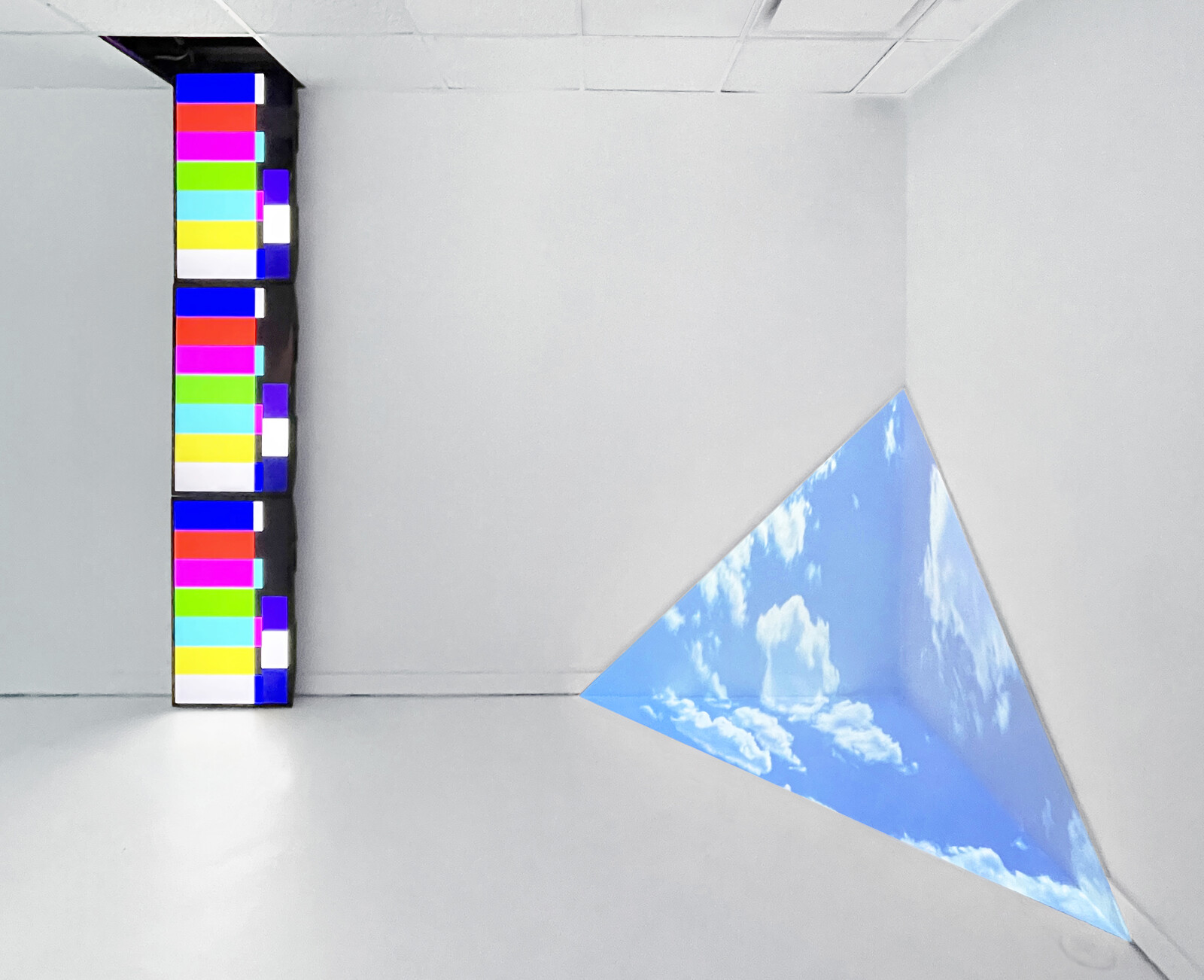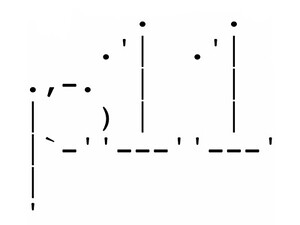VISIONS / VOIDS
June 2–July 27, 2021
From a chamber beneath downtown Zhekagoynak (Chicago), Indigenous futurist SANTIAGO X seeks to uproot the invasive architectures that dominate the city’s skyline, replacing modernist monuments to white supremacy with future landscapes that underscore the Anthropocene as a glitch in geological time. The artist’s first solo exhibition, VISIONS/VOIDS, showcases recent and developing bodies of work that challenge the distinctions between natural, built, and virtual environments through a thoughtful fusion of ancestral and emergent place-making technologies, illuminating these liminal spaces.
Melding regional geographies, symbologies, and architectural forms, VOID STRATA takes the site of the exhibition as a point of departure, reimagining the Neoclassical Chicago Cultural Center in the likeness of Monks Mound, with Space p11 acting as a subterranean chamber beneath this futurist pyramid. This vision is grounded in X’s literal terraforming projects— FOLOLOHKÁ ČINTO (The Coiled Serpent) and POKTO ČINTO (Serpent Twin)—the first effigy earthworks constructed by Indigenous peoples in North America since the founding of the United States. These material interventions allow X to introduce a counter-narrative to the geological record, an ultra-historical testament to the continuity of Indigenous peoples and practices.
While VOID STRATA and X’s earthworks transform sites in the urban landscape according to the artist’s will, FLUX WINDOW presents visions of the future that are many times removed from the Chicago we know. These landscapes are the hallucinations of a generative adversarial network (GAN), a dialectical model of machine learning that competes internally to synthesize new images that the system deems convincing depictions of whatever real images it was trained to simulate—in this case sets of data including the Chicago skyline, indigenous flora, and mound sites across the central and southeastern United States. Shifting from idyllic to dystopian, these landscapes lend new meaning to terra nullius, rendering an uncanny and inaccessible realm that melts away before it can be claimed.
The earliest work presented in the exhibition, THE RETURN (o:lači okhiča) draws from X’s series of portals—geometric spatial interventions that simultaneously lend illusory form to images and encourage the viewer to see beyond the architecture facilitating these illusions, to look into the self. In the most recent iteration, THE RETURN (o:lači okhiča) is mirrored by inverted mound topographies, together rotating the gallery on its z-axis.
Proposing a restorative future for institutions central to colonization, VISION, depicts three-dimensional revolving renderings of unidentified indigenous objects in the Field Museum of Natural History collection. While museums have long employed 3D imaging techniques to facilitate scholarship on objects in their collections, for X this presents an opportunity to rematriate these significant objects, leaving the institutions with only the ghostly aura of the original.
Curated by Duncan Bass.
SANTIAGO X, M.Arch, MFA is an Indigenous futurist, multidisciplinary artist and architect specializing in land, architectural, and new media installation. Currently, X is reinvigorating the ancestral practice of Indigenous mound building, via two large-scale augmented public earthwork installations in Chicago, Illinois.
SANTIAGO X received a Bachelors of Environmental Design from the University of Colorado, a Masters of Architecture from the University of Southern California, and a Masters of Fine Arts Studio in Art and Technology from the School of the Art Institute of Chicago. He is an enrolled citizen of the Coushatta Tribe of Louisiana (Koasati) and Chamoru from the Island of Guam (Hacha’Maori).
Duncan Bass is a curator and art historian based in Chicago. His writing and curatorial projects explore the intersections of art and contemporary culture with an emphasis on the societal implications of emerging technologies and the politics of visuality.
VISIONS/VOIDS is part of Interior Landscapes, a year of programming at Space p11 supported by a grant from the Graham Foundation for Advanced Studies in the Fine Arts.




